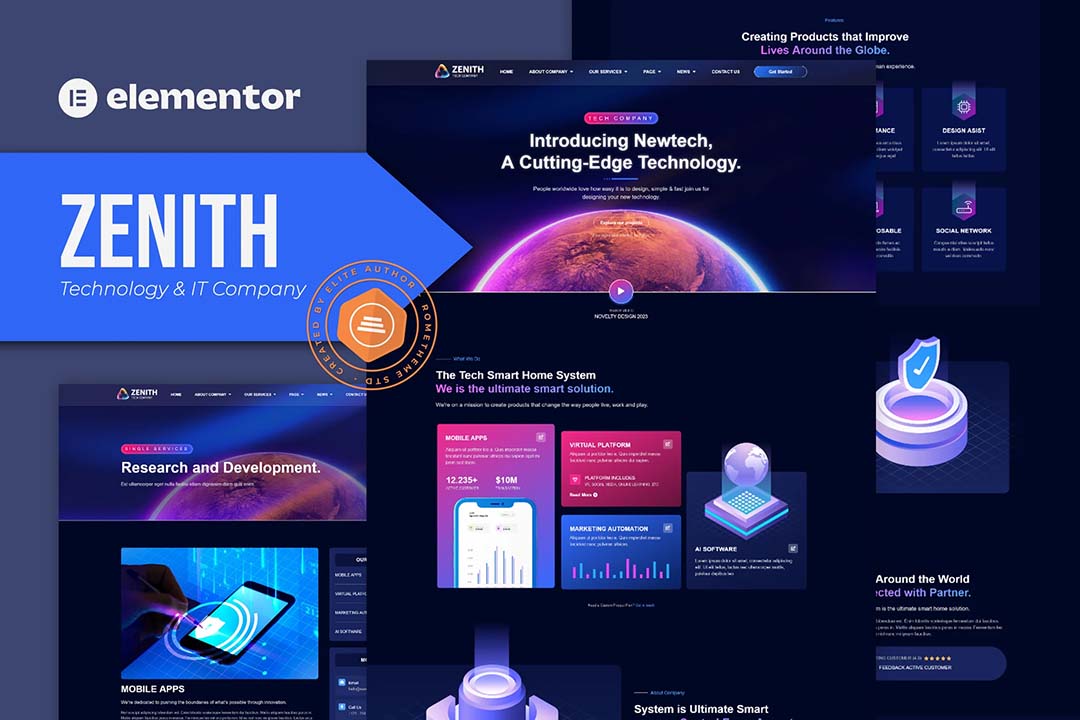First Content Painting (or FCP for short) is an important metric used by Google to measure the speed at which a web page loads, recording the time it takes from when a user starts loading a page to when the first piece of content on the page appears.
For WordPress website owners, FCP shows how well a website is working and the impact it may have on user experience and search engine optimization (SEO). A fast FCP means that visitors don't have to stare at a blank screen for long periods of time, which can make their website experience more enjoyable and therefore increase user engagement.
Google puts a lot of emphasis on user experience, so your site's FCP score will have a direct impact on how it ranks in search results. Having a good FCP score (ideally ranking in the top 25% of all web experiences) means that the FCP time should be 1.8 seconds or less.
![图片[1]-如何提升WordPress网站的首次内容绘制(FCP)得分,加速网页加载-光子波动网 | 专业WordPress修复服务,全球范围,快速响应](https://www.361sale.com/wp-content/uploads/2024/03/image-445-1024x585.png)
Best Strategies for Improving WordPress FCP
Reduce server response time
One of the key actions to improve the First Content Painting (FCP) performance of a WordPress site is to reduce the server response time, which we measure as Time to First Byte (TTFB).
TTFB is the time it takes for the user's browser to receive the first byte of data from the server. If TTFB is slow, it could be because:
- Network connectivity issues.
- Server settings are not optimized for speed.
- Too many visitors online at the same time for the server to handle.
To accelerate your TTFB, here's what you can do:
- Choose a reliable hosting service who has good facilities and expertise to handle heavy traffic.
- Using a content delivery network (CDN), which can host copies of your website in multiple locations around the globe, allows users to load the site from the location closest to them, which can greatly reduce load times.
- Enable caching so that when visitors come back, the site can be displayed quickly without having to reload everything each time.
Eliminate render-blocking resources
Render-blocking resources, mainly JavaScript and CSS files. These files must be fully loaded and executed before the browser can start displaying the content of the page. If these files are too large or complex, then the time it takes for your site to load until the first piece of content appears (FCP) will be longer.
In order to make your WordPress site load faster, you need to optimize the way your site handles JavaScript and CSS files. Simply put, do the following:
![图片[2]-如何提升WordPress网站的首次内容绘制(FCP)得分,加速网页加载-光子波动网 | 专业WordPress修复服务,全球范围,快速响应](https://www.361sale.com/wp-content/uploads/2024/03/image-446-1024x585.png)
For JavaScript files
The sensible thing to do is toUsing the async and defer attributes on JavaScript filesThe
When you use "asynchronous loading", you're actually letting the browser continue to build the page while the JavaScript files load silently in the background. After these scripts are downloaded, the browser stops building the page briefly, executes the scripts, and then continues on with its previous work. It's a good idea to use asynchronous loading when these JavaScript files don't need to be executed in a particular order.
The advantage of "defer" is that it allows the browser to wait until the page is fully displayed before executing the JavaScript, which ensures that when your script needs to interact with the HTML elements of the page, they are already ready to do so.
💡 How you choose asynchronous or delayed loading depends largely on what kind of script you have:
- If the order in which your scripts are executed is important, or if the scripts need to be run after the page has been fully displayed, then delayed loading may be more appropriate.
- If your script doesn't have much to do with the HTML elements on the page and the order of execution doesn't matter, then asynchronous loading may be a better option.
For CSS files
Consider writing the CSS styles that are initially needed for the page to load directly into the HTML. This means putting the basic styles needed to make the content visible to the user in the first place directly into the web page code. Doing so allows the browser to start displaying the page faster by not having to wait for an external CSS file when loading the page.
Also, removing unwanted or unused CSS and JavaScript code can help pages display faster, making FCP (First Time Content Painting) faster.
![图片[3]-如何提升WordPress网站的首次内容绘制(FCP)得分,加速网页加载-光子波动网 | 专业WordPress修复服务,全球范围,快速响应](https://www.361sale.com/wp-content/uploads/2024/03/image-447-1024x585.png)
Compressing CSS
Compressing CSS means removing unwanted things from the file, such as extra spaces, comments, and delimiters, and doing so will not affect the operation of the page.
This method significantly reduces the size of CSS files, allowing them to load faster, which in turn speeds up the first display of your website's content. There are many tools and plugins that can help you automate this compression process, theWP Rocketis one of the popular choices - not only does it compress CSS, but it also offers features such as caching and delayed loading JavaScript to help make your WordPress site speedy.
If you need other options, you can also tryAutoptimizerespond in singingW3 Total Cacheand other plugins. These tools automatically compress CSS so you don't have to manually edit it yourself, saving you both time and frustration.
Avoid placing JavaScript-dependent elements above the first screen
If the content on your website that is first shown to visitors relies heavily on JavaScript, this can slow down the first content display (FCP) of your website. The reason for this is that the browser needs to download, analyze and then execute the JavaScript code before it can display the content.
To make FCP fast, it's best to rely primarily on HTML and CSS for your site's first-screen content, rather than JavaScript.This means that you need to arrange your site's layout and basic visual elements in a way that doesn't require you to wait for JavaScript to load to display them quickly.
The method to perform this operation is as follows:
- Evaluate which parts of the site require JavaScript and which parts do not.For example, simple design elements and basic content should not beneedJavaScript. you can then build the HTML to load these elements first. Use CSS to style as much as possible, especially the first screen. CSS loads faster than JavaScript and often achieves similar visual effects.
- Deferred or asynchronous loading of JavaScript files, especially those files that are not important for the initial page rendering. This way, your site can display its main content without having to wait for all the JavaScript to load and execute.
By prioritizing the loading of HTML and CSS for first-screen content and reducing your initial reliance on JavaScript, you can speed up FCP and create a smoother, more responsive experience for visitors when they land on your WordPress site.
![图片[4]-如何提升WordPress网站的首次内容绘制(FCP)得分,加速网页加载-光子波动网 | 专业WordPress修复服务,全球范围,快速响应](https://www.361sale.com/wp-content/uploads/2024/03/image-448-1024x585.png)
Optimize images and avoid delayed loading of the first screen
If the images on top of your website are too large, they will load slowly, especially those important images that are placed at the top of the page, which will slow down the first impression (FCP) of the website display.
For example, if the large background image on the home page (often referred to as the "hero image") is not optimized, it will slow down the page like a traffic jam.
To avoid this problem, here's what you can do:
- Compressed images: This can help reduce the size of the image file without making the image look much worse.
- Choose the right image format: For example, for photos, the ones in JPEG format are usually smaller and load faster than PNG ones.
- Using Responsive Images: Provide images in different sizes depending on the device accessing the site. For example, mobile users are provided with smaller image files than desktop users so that they load faster on small screen devices.
- Implementation of delayed loading: Load images only when they are going to appear on the screen. This method works for images below the first screen, but it's best not to use it for images on the first screen to avoid affecting loading speed.
- Simplify the process with plug-ins: Smush is a great tool that automatically compresses and optimizes images for you.
With these methods, your website loading speed can be improved so that visitors can quickly see the content as soon as they open the site.
Implementing server-level caching
Server-level caching is when a copy of a website page is kept on the server. This way, when someone visits the site again, the server can just display this cached page without having to reload the entire page each time.
This method is awesome because it does what browser caching can't. Browser caching is the process of saving website information on a visitor's computer or cell phone so that it loads faster the next time they visit. But for first-time visitors, browser caching can't help. Server-level caching, on the other hand, makes the experience faster for every visitor, first-time or not.
Nowadays, a lot of services that offer WordPress hosting include server-level caching, which makes everything a lot easier. You can also do this with plugins like WP Rocket or W3 Total Cache, which offer a number of caching options, including server-level caching.
Reduce DOM size
In web development, there's something called the Document Object Model, or DOM for short.Imagine it as the blueprint for a web page, helping the browser know how to display each part of the page - whether it's text, images, or headings.
The DOM turns a web page into a large family tree made up of many small parts. Whenever you do something on a web page (such as clicking a button), the browser refers to this family tree and updates the web page according to your action.
If the family tree is simpler, the faster the browser renders the web page, which means that the web page is displayed to you faster. But if the family tree is too complex, the browser has to spend more time figuring it out, which slows down the display of the web page, meaning you have to wait longer to see the content. Simply put, keeping the DOM lean allows web pages to load faster, giving you a better browsing experience.
![图片[5]-如何提升WordPress网站的首次内容绘制(FCP)得分,加速网页加载-光子波动网 | 专业WordPress修复服务,全球范围,快速响应](https://www.361sale.com/wp-content/uploads/2024/03/image-449-1024x585.png)
Essentially, a leaner DOM allows for faster interactions and a more responsive user experience.
Here are some useful tips for reducing the DOM size:
- Minimize unnecessarydivElements:Excessive use of HTML div elements can lead to an oversized DOM. Simplify the page structure by removing divs that are not used for a specific purpose.
- Utilize CSS more efficiently:Use CSS rather than relying heavily on JavaScript or excessive HTML structure for styling.CSS is faster for browsers to process and often achieves the desired visual and functional results with a more streamlined DOM structure. This approach organizes the DOM and reduces page load times.
- Semantic HTML:Whenever possible, use HTML5 semantic elements such as
, , , - Optimize JavaScript-generated HTML:If your site uses JavaScript to generate HTML dynamically, make sure the process is efficient. Avoid unnecessary nesting of elements and examine the structure of the generated HTML for opportunities to simplify.
- Review and refactor your code:Regularly audit your site's code for unnecessary elements and outdated practices.Tools like Chrome's DevTools can help identify parts of the DOM that are too large or complex. Refactoring your code may mean combining elements, simplifying CSS selectors, or refactoring certain parts of the page.
- Use CSS Grid and Flexbox:Modern CSS layout techniques such as Grid and Flexbox significantly reduce the need for additional divs and nested structures. They provide a more efficient way to create complex layouts with less HTML.
- Limit the use of third-party scripts:Third-party scripts can add extra elements to the DOM. Limit their use and choose lightweight alternatives whenever possible.
Using a Content Delivery Network (CDN)
A content delivery network, or CDN for short, is like a courier service, but this one distributes web content. It does this by placing a series of servers (think of them as courier stations) around the world to make sure that getting web pages is lightning fast, no matter where you are.
Imagine that every time you surf a website, the CDN service delivers the content to you quickly from the nearest "delivery station" (aka server). The benefit of this is that it reduces the distance the data has to travel and makes the page load much faster.
This fast delivery not only makes the web pages open faster, but it also makes your website rank higher on the search engines. Because a fast loading web page is more popular, search engines like it more. Simply put, using a CDN is like putting a super booster on your website to make it fly in front of users.
Reliable CDN compatible with WordPress is included:
- Cloudflare:: Cloudflare is widely recognized for its extensive web and security features. It offers a very powerful free plan and is known for its easy integration with WordPress, making it a popular choice for WordPress website owners.
- Akamai:: Akamai is one of the oldest and most comprehensive CDN services, known for its vast network of servers and advanced security features, though it's probably better suited for large, enterprise-level sites.
- MaxCDN (now StackPath):: StackPath offers high-speed CDN services and is especially known for its user-friendly interface and effective integration with WordPress caching plugins, making it a popular choice for small and medium-sized websites.
- KeyCDN:: KeyCDN is an affordable and efficient CDN provider that is easy to set up using WordPress and offers pay-as-you-go pricing, which is appealing for websites with variable traffic.
- Amazon CloudFront: CloudFront, part of Amazon Web Services (AWS), is a powerful CDN service that integrates well with other AWS services. It's a good choice for sites that require a high degree of customization and are already part of the AWS ecosystem.
- Fastly::With a real-time CDN with edge computing capabilities, Fastly not only delivers content, but also runs custom code very close to the user, providing unique personalization and optimization features.
- Sucuri:: Known primarily for its security solutions, Sucuri also offers a CDN service that integrates security and performance, making it a great choice for WordPress sites concerned with speed and security.
![图片[6]-如何提升WordPress网站的首次内容绘制(FCP)得分,加速网页加载-光子波动网 | 专业WordPress修复服务,全球范围,快速响应](https://www.361sale.com/wp-content/uploads/2024/03/image-450-1024x585.png)
Avoid multiple page redirects
Redirects are like springboards for web pages, sometimes they help guide us or search engines to the correct URL. But this process slows down the opening of web pages. Imagine the browser having to do an extra round of "ask for directions - be told the new direction - go again" every time it comes across a place it needs to jump to.
It's like asking for directions and being told that your destination has changed and you need to go another way. Each time you ask for directions, it takes you longer to get there, and the browser is slower to display the content.
If a web page has too many of these jumping-off points (also known as redirects), it makes the journey of the data longer, leading to an increase in the time it takes to load the web page, which may make the user impatient. So, redirects should only be used when they are really needed to avoid unnecessary delays so that everyone can be happier and smoother when visiting web pages.
You can take the following steps to ensure that you manage redirects effectively and optimize your site's performance and SEO:
- Audit your site's redirects: use theGoogle's PageSpeed Insights,GTmetrixmaybeWebPageTestand other tools to analyze your website and report the number and impact of redirects. They can help you you identify unwanted redirects.
- Check the server configuration:Check the server configuration file (e.g., on the Apache server) for the.htaccess) for redirection rules. Sometimes redirects are set and forgotten, so it's important to check these configurations regularly.
- Simplify URL structure:The goal is a simple URL structure. This reduces the need for redirects, especially if the URL pattern changes over time.
- Check internal links:Ensure that all internal links point directly to the final destination URL, rather than redirecting to an intermediate URL.
- Update external links:If you have control over external links (e.g. backlinks from other sites), try to ensure that they point directly to the current URL to avoid unnecessary redirects.
- Redirection Chain:Avoid chains where one redirect leads to another. If a redirect is needed, make sure it goes directly to the final destination URL.
- Use 301 redirects to make permanent changes:Use 301 redirects when redirects are needed (e.g. when moving a page permanently). They are more effective than temporary redirects (such as 302) and are better for SEO.
There are a number of plugins and tools that can help with this issue:
- redirectsis a popular plugin that helps manage and track 301 redirects, making it easier to handle redirects in WordPress.
- Screaming Frog SEO Spideris a powerful tool that crawls your website, identifies redirects and redirect chains, and helps you understand and optimize your website's redirect structure.
Regularly monitoring and fine-tuning these elements will keep your WordPress site running smoothly and efficiently, providing visitors with an excellent experience and maintaining a strong online presence.
Tools for measuring FCP scores
Regularly checking to see how fast your web pages are loading (a process called FCP monitoring) is like giving your website a health check, helping you to find out what's slowing things down and then finding ways to make them load faster. Doing so ensures that everyone who visits your site enjoys a smooth and speedy browsing experience.
Neglecting to monitor this loading speed can upset visitors and cause them to stop visiting your site. In the competitive environment that is the internet, making your website load fast is not only something that will make your users happy, it will also help your website stand out.
![图片[7]-如何提升WordPress网站的首次内容绘制(FCP)得分,加速网页加载-光子波动网 | 专业WordPress修复服务,全球范围,快速响应](https://www.361sale.com/wp-content/uploads/2024/03/image-433.png)
Usage:
- Visit the PageSpeed Insights website.
- Enter your URL.
- click (using a mouse or other pointing device)analyzeLet the tool evaluate your page.
PageSpeed Insights provides detailed reports, including FCP scores. It categorizes performance into different ranges, with scores above 90 considered good. The tool also suggests possible improvements to improve the site's loading speed and overall performance.
![图片[8]-如何提升WordPress网站的首次内容绘制(FCP)得分,加速网页加载-光子波动网 | 专业WordPress修复服务,全球范围,快速响应](https://www.361sale.com/wp-content/uploads/2024/03/image-441.png)
Lighthouse
Lighthouseis another free tool from Google that integrates with Chrome and provides insight into FCP as part of its performance scoring.
![图片[9]-如何提升WordPress网站的首次内容绘制(FCP)得分,加速网页加载-光子波动网 | 专业WordPress修复服务,全球范围,快速响应](https://www.361sale.com/wp-content/uploads/2024/03/image-442.png)
You can find out more about this in Chrome DevTools'LighthouseLighthouse provides lab data (under controlled conditions) and field data (reflecting real user experience) to provide a comprehensive view of a site's FCP performance.
WebPageTest
WebPageTestis a versatile tool for FCP measurements that provides detailed performance insights. It allows you to test from different locations and browsers to get a more granular view of your site's performance under various conditions.
![图片[10]-如何提升WordPress网站的首次内容绘制(FCP)得分,加速网页加载-光子波动网 | 专业WordPress修复服务,全球范围,快速响应](https://www.361sale.com/wp-content/uploads/2024/03/image-443.png)
GTmetrix
GTmetrixCombines the power of Google Lighthouse and other tools to provide detailed reports on website performance, including FCP. its user-friendly interface and comprehensive analytics make it a popular choice for website owners and developers.
![图片[11]-如何提升WordPress网站的首次内容绘制(FCP)得分,加速网页加载-光子波动网 | 专业WordPress修复服务,全球范围,快速响应](https://www.361sale.com/wp-content/uploads/2024/03/image-444.png)
By using these tools, it is possible to stay on top of your website's performance and make informed decisions to improve and maintain a quality user experience.
summarize
Getting your website's content out to visitors quickly (a process called "first-pass content mapping") is important. Not only does it make for a better user experience, but it can also help to improve your site's ranking in the search engines. So it's really worth taking the time to optimize in this area.
However, actually performing such an optimization can be a bit challenging and requires you to be patient enough to debug and optimize step by step. It's like solving a complex puzzle, and while the process may be a bit tedious, it can ultimately make your website faster and give users a better browsing experience.
Link to this article:https://www.361sale.com/en/6882
The article is copyrighted and must be reproduced with attribution.

























![Emoji[lenghan]-Photonflux.com | Professional WordPress Repair Service, Worldwide, Fast Response](https://www.361sale.com/wp-content/themes/zibll/img/smilies/lenghan.gif)









No comments